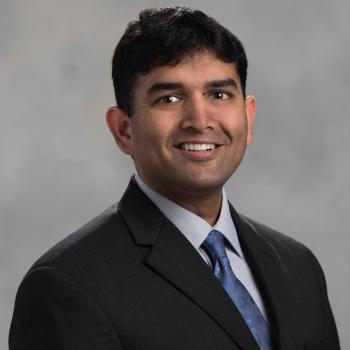School of Engineering
Showing 1-50 of 3,033 Results
-

Tom Abate
Associate Director of Communications, School of Engineering - External Relations
Current Role at StanfordI write about research and other activities of the 250 faculty and 5,300 students of the nine departments that comprise the Stanford School of Engineering.
-

Feross Aboukhadijeh
Masters Student in Computer Science, admitted Autumn 2011
BioI'm Feross Aboukhadijeh, an entrepreneur, programmer, open source maintainer, startup founder, and mad scientist.
I build web apps like BitMidi, a free MIDI database, and Play, a music video app, and Study Notes, a site to help students study better and get into college.
I also build WebTorrent, a torrent library for the web, WebTorrent Desktop, the best desktop torrent app, and Standard JS, a JavaScript linter.
Before that, I built PeerCDN, a peer-to-peer content delivery network to makes sites faster and cheaper, which was acquired by Yahoo.
I enjoy working on "mad science" — stuff that makes people say, "Whoa! I didn't know that was possible!".
I'm a graduate of Stanford University and I've worked at Quora, Facebook, Yahoo, and Intel. In the past, I did research in the Stanford human-computer interaction and computer security labs.
At Stanford, I taught computer science for 6 quarters to students in Stanford's CS 198 program, and was a teaching assistant for CS107: Computer Organization and Systems. I organized lots of sweet computing-related events as president of Stanford's Association for Computing Machinery chapter.
In September 2010, I built YouTube Instant (a really fast way to search YouTube) in just 3 hours as a bet with my roommate. The site garnered immediate worldwide media attention — 1 million visitors in 10 days, and hundreds of news stories. Chad Hurley, CEO and co-founder of YouTube, was so impressed that he immediately offered me a job at YouTube (which I had to turn down in order to finish my degree).
In my free time, I continue to maintain StudyNotes, a website to help students study better. I started it in high school and have been maintaining it ever since. For a sample, check out some AP US History notes or college essays.
I like long-distance running, traveling, vapourwave, anime, and games (counter-strike is still my favorite).
My resume is available if you want to be all, like, formal and stuff, dude. Email me at [my first name]@feross.org. -

Guillermo (Willie) Aboumrad Sidaoui
Ph.D. Student in Computational and Mathematical Engineering, admitted Summer 2018
Other Tech - Graduate, DAPER Departmentwide OperationsBioWillie was born and raised in Mexico City. He later moved to the UK to complete his high school studies. In the fall of 2014, Willie arrived at Stanford to begin his undergraduate career in Mathematics. Interested in applications of mathematical theory, he later gained admission to the Master's program at ICME. He is currently pursuing a doctoral degree under the advisory of Prof. Daniel Bump.
-

James L. Adams
Professor of Industrial Engineering and Engineering Management and of Mechanical Engineering, Emeritus
Current Research and Scholarly InterestsI have for some time been working on two books. The working title for one is Making, Fixing, and Tinkering, and it concerns the benefits of working with the hands. The other has a working title of Homo Demi Sapiens, and is about the balance of creativity and control in very large groups (societies, religions, etc.). I am also revising a book entitled The Building of an Engineer, which I wrote for my aging mother and self-published. It is somewhat autobiographical, and although it is available on Amazon, I do not consider it quite ready for public reading.
-

Amirali Aghazadeh
Postdoctoral Research Fellow, Electrical Engineering
BioAmirali is a postdoctoral fellow in the department of Electrical Engineering working with Prof. David Tse and Prof. James Zou. His research interests are in machine learning, statistics, signal processing, and large-scale computing with applications to genomics, diagnostics, and health. He develops machine learning algorithms to analyze large-scale datasets, as well as, machine leaning tools to design sensing systems. He received his Ph.D. in Electrical and Computer Engineering from Rice University in 2017.
-

Maneesh Agrawala
Forest Baskett Professor in the School of Engineering and Professor, by courtesy, of Electrical Engineering
Current Research and Scholarly InterestsComputer Graphics, Human Computer Interaction and Visualization.
-

Clarice D. Aiello
Postdoctoral Research Fellow, Bioengineering
BioI am a quantum engineer interested in how quantum physics informs biology at the nanoscale.
-

Alex Aiken
Alcatel-Lucent Professor in Communications and Networking and Professor of Particle Physics and Astrophysics and of Photon Science
BioAiken's research focuses on developing techniques for the construction of reliable software systems. His interests include both static and dynamic methods of analyzing programs, and span both detecting errors and verifying the absence of errors in software. Most of his research combines a theoretical component (for example, proving the soundness of an analysis technique) and a practical component, which often involves the implementation and measurement of advanced program analysis algorithms. Finally, his research also extends to the design of new programming languages and programming techniques in which it is easier to write software that can be checked for a wide variety of errors.
-

Rehman Ali
Ph.D. Student in Electrical Engineering, admitted Autumn 2017
Masters Student in Computational and Mathematical Engineering, admitted Autumn 2017BioRehman Ali received the B.S. degree in biomedical engineering from Georgia Institute of Technology in 2016. He is currently an NDSEG fellow, completing a M.S. in Computational & Mathematical Engineering and pursuing a Ph.D. in Electrical Engineering at Stanford. His research interests include signal processing, inverse problems, computational modeling of acoustics, and real-time beamforming algorithms. His current research is developing accurate and spatially resolved speed-of-sound imaging in tissue based on phase aberration correction, spatial coherence, and computed tomography














